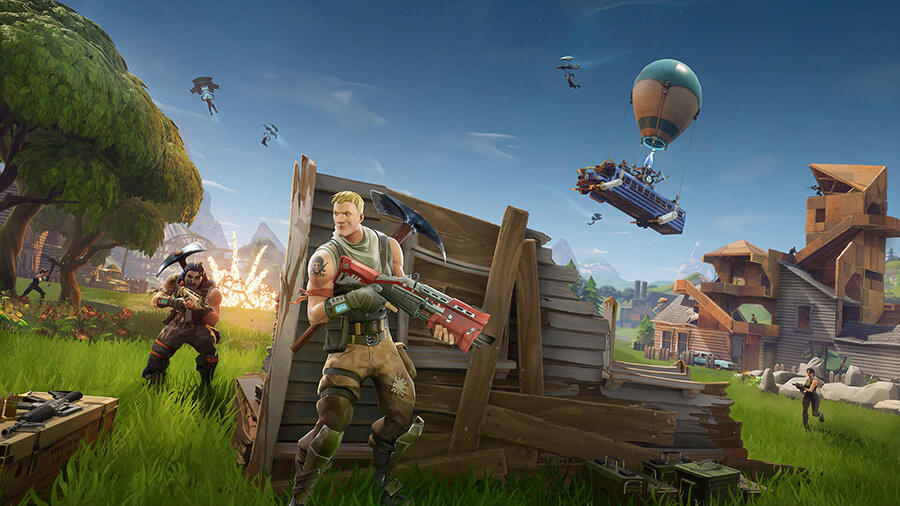How Video Game ‘Fortnite’ Turned Dance Into A Contagious Commodity
Nods to the game in World Cup celebrations show how dance has gone viral – but unwittingly instrumentalized for commercial interests
Nods to the game in World Cup celebrations show how dance has gone viral – but unwittingly instrumentalized for commercial interests

When England’s Dele Alli scored against Sweden in the World Cup quarter final last week, putting the young team 2-0 ahead (and marking their final victory of the competition) he celebrated with a dance. Though the word dance feels too substantial here. This was a fragment of a dance, less of a choreographic signature and more of a sign, a gesture. A double rotation of the player’s hand above his head was twinned with a set of bow-legged steps. It’s a performance that disintegrates seconds after it begins, cohering within a perfectly gifable timespan – as if already predicting its virality.

As expected, the social media dissemination began almost immediately, and within seconds it was identified as ‘ride the pony’, a dance move from the popular video game Fortnite Battle Royale (2017). Once a beleaguered open-world ‘sandbox’ game with a declining audience, Fortnite was reinvented in its Battle Royale form (the fight-to-the-death genre birthed by the eponymous cult 2000 Japanese film) in September 2017, registering 125 million players in its first 3 months. With little effort you can find videos of Alli himself playing the game alongside England team-mates Harry Kane and Kieran Trippier, on the world’s most watched streaming site, Twitch. Fortnite Battle Royale is big business for its creator and publisher Epic Games, and its free-to-download access makes it custom built for viral propagation through streaming and social media. The game’s business model relies not on a price for entry, but on an internal economy, where ‘cosmetic’ items, such as costumes and, yes, dance moves for your avatar, are sold for real currency.

The game’s influence is remarkable – this year’s World Cup alone has seen Fortnite-inspired celebrations from Alli’s England team-mate Jesse Lingard and France’s Antoine Griezmann, while in the run-up to the competition, the German Bundesliga, English Premier League and the Europa League have been scattered with players’s celebrations referencing the game. The game’s unlockable dances have become a symbol to be transmitted between players and fans, a point of connection made in a second or two of loose choreography. This is dance as meme: infinitely transmittable, stripped of meaning, re-enacted in cyclical fashion. Alli’s ‘ride the pony’ is the game’s own reference to Korean popstar Psy’s viral 2012 music video Gangnam Style, its horse-riding dance routine having already saturated popular media.

Almost every dance in Fortnite borrows and references snatches of past moves, recast into a victory celebration for the game. Carlton’s swinging dance from the 1990s hit sitcom The Fresh Prince of Bel-air (1990-1996) sits alongside Atlanta hip-hop move ‘The Dab’ and choreography lifted from an episode of television sitcom Seinfeld (1989-1998). This use of dance as a meme is nothing new, and many of Fortnite’s dances are themselves born out of viral videos, Vines and gifs. But what is different is how Fortnite’s dance animations are arranged in a shifting storefront that creates an artificial rarity to each move, encouraging players to purchase them during a small window of availability (following victory in battle). Here the symbolic content of each dance is absolute – each is a stand-in, existing in place of its original reference. Players purchase them as both a sign of allegiance to a chosen strand of nostalgia (be that for now defunct Vines or ‘90s cult TV) and a signifier of their own pop culture knowledge.

What the recent World Cup celebrations of Alli and others demonstrate is that this concept of dance as property, as knowledge and as symbol, has slipped neatly outside of the world of video games. These celebrations might as well be adverts for Fortnite, for the confidence with which they boast ownership of a product as allegiance to a social group. In her 2018 book Consuming Dance: Choreography and Advertising, Colleen T. Dunagan comments on a 2015 commercial produced by soft drinks company Mountain Dew, in which a group of men gaming in a basement apartment suddenly begin to dance uncontrollably upon drinking the energy drink. Dunagan writes: ‘the Ad’s content raises questions pertaining to the idea of affect as both contagion and contingent depending on one’s context, as well as the relationship between participatory culture (i.e., relational aesthetics), advertising, and affect.’ Fortnite’s use of dance as a commodity, and the bleeding of that relationship into reality through World Cup celebrations and social media, engages with exactly that same paradigm, where the affective quality of dance, as well as its participatory nature make it the ideal carrier for a product’s social contagion. Dance becomes viral in the base meaning of that term: contagious, self-replicating, unpredictable, and when instrumentalized for commercial interests, incredibly powerful.
Main image: Dele Alli celebrating during the Sweden v England: Quarter Final, 2018 FIFA World Cup Russia. Courtesy: Getty Images; photograph: Jean Catuffe






















